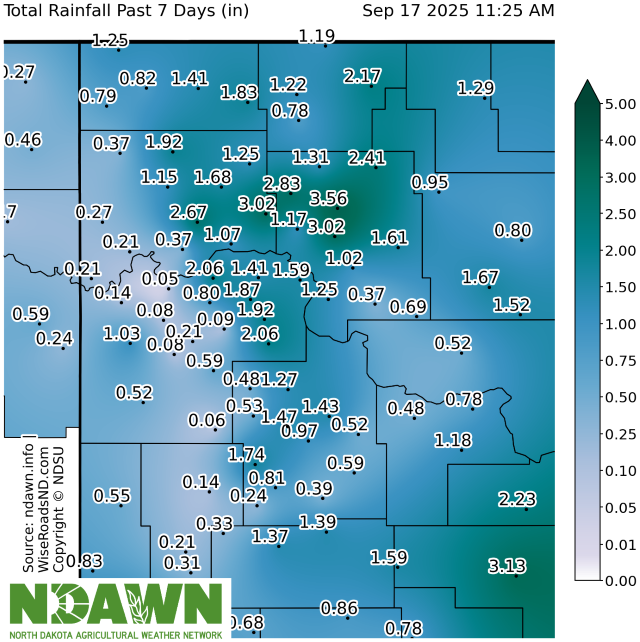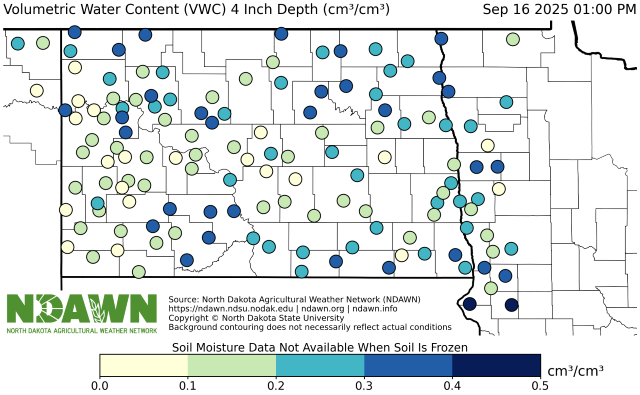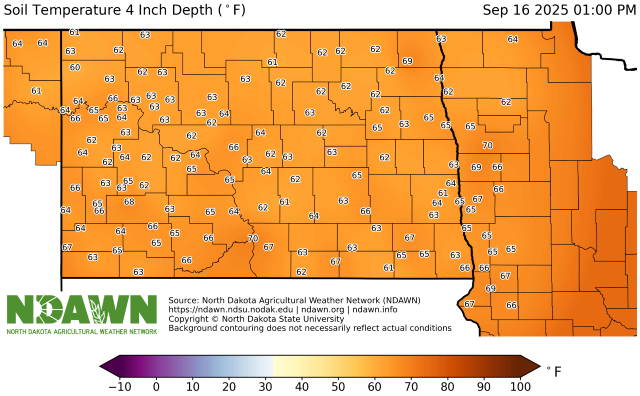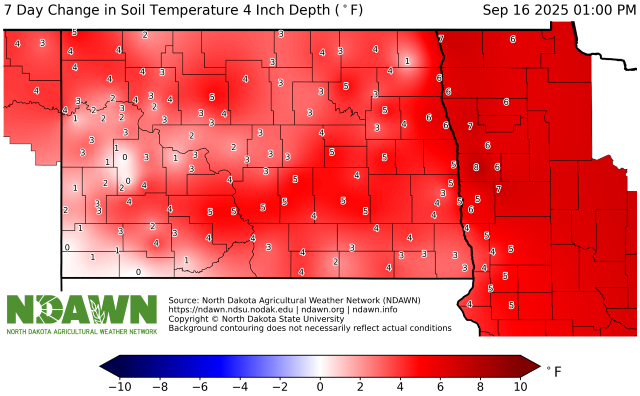Agronomy Update
Sep 15, 2025
Planting Winter Wheat: Best Practices for a Successful Start
Despite the challenging grain market, excellent fall moisture has made this a great year to seed winter wheat. If you plan to plant winter wheat this fall, here are some best practices to maximize success.Planting Dates Matter
The optimal time to plant your winter wheat is right now.
- North of Highway 200: The first half of September is ideal.
- South of Highway 200: The latter half of September is your best window.
Remember, all winter wheat needs in the fall is to crack the seed coat to vernalize. Some growers intentionally delay planting until harvest is wrapped up, just make sure the seed still gets that fall germination trigger.
Stay Clean – Break the Green Bridge
This is the most crucial step when planting winter wheat, especially after the wet July and August we just experienced. Moisture has triggered flushes of foxtail, barnyard grass, and volunteer cereals.Green grasses are the primary host for the wheat curl mite which transmits Wheat Streak Mosaic Virus (WSMV), one of the most yield- robbing diseases we face in this crop.
The only way to control WSMV is to prevent infection:
- Eliminate all green grass from the field before planting.
- Maintain a weed-free period of at least seven days before wheat emergence.
- Plan your burndown timing carefully to give yourself this clean window.
Don’t Forget Your Starter – Phosphate Pays
Phosphate is one of the most critical nutrients for winter wheat establishment. A well-placed starter fertilizer:
- Encourages vigorous fall root development, giving wheat a head start before dormancy.
- Improves winter survival by helping plants build stronger crowns.
- Drives early spring tillering, setting up a higher yield potential.
Consider pairing phosphorus with a small amount of nitrogen and sulfur in-furrow or in a safe band to give seedlings everything they need from day one.
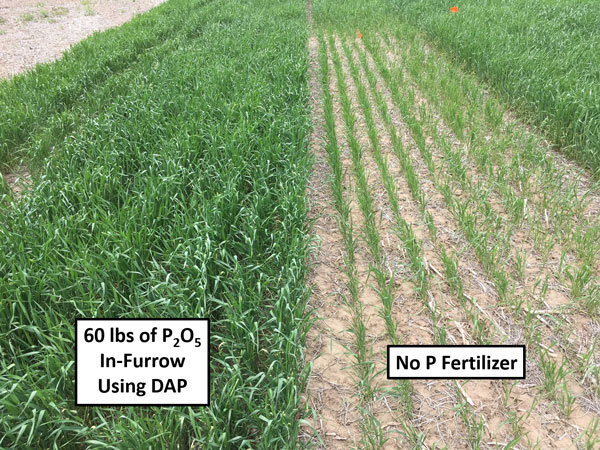
Photo taken April 18th of winter wheat without (left) and with (right) 96 lbs./ac DAP in furrow. Credit: Dennis Pennington
Wrapping Up
Winter wheat can be one of the most rewarding crops to grow when managed well. Getting the timing right, eliminating the green bridge, and giving the crop the nutrients it needs sets you up for success next spring.Take advantage of this fall’s good moisture, make your burndown pass, get seed in the ground on time, and feed the crop what it needs. A little attention now pays dividends with a thick, healthy stand ready to hit the ground running when snow melts in the spring.
Kyle Okke, CCA
Agile Agronomy LLC & Agronomists Happy Hour Podcast
Herbicide Resistant Kochia Update
This spring, I submitted kochia samples from six fields in Williams County and one field in McKenzie County for herbicide resistance testing. The genetic assay, conducted by the National Agricultural Genotyping Center, screens kochia for herbicide resistance to:- Group 14 (e.g., Aim, Sharpen, Valor, Spartan)
- Group 9 (glyphosate)
- Group 2 (e.g., Express, Raptor, Audit 1:1 or 4:1, Affinity products)
- Glyphosate resistance was present in all of the fields tested.
- Group 2 resistance was found in six out of seven fields.
- Group 14 resistance was detected in four of the seven fields.
So far this fall, I’ve tested kochia from eight lentil fields and one durum field. The lentil fields were sampled prior to desiccation and the durum field was sampled post-harvest. Seven fields were located in different areas of Williams County with one lentil field in McKenzie County. The results were concerning:
- Group 14 and glyphosate resistance were present in all nine fields.
- In some fields, every plant tested (four per field) was positive for Group 14 resistance.
- Although the assay can detect only one type of Group 2 resistance, it still returned positive results in six of the eight fields.
The articles below provide more details on both products and how they might fit into your operation. As always feel free to reach out with any follow up questions.
Dr. Audrey Kalil
Agronomist & Outreach Coordinator
Introducing Preview 2.1® for Fall Application
As harvest winds down, it is time to start planning for next spring. Fall is a key window to implement residual herbicide strategies targeting winter annuals, early-emerging summer annuals, and resistant weed biotypes.Preview 2.1, a co-formulated SC product containing sulfentrazone (Group 14) and metribuzin (Group 5), offers broad-spectrum broadleaf control and early-season suppression of select grass species.
Registered in North Dakota for fall application ahead of HRSW, durum, barley, corn and soybeans, Preview 2.1 enhances spring weed management by providing consistent residual activity across varying soil types and environmental conditions.
Note that this product is not currently labeled for use in Montana.
Mode of Action and Resistance Considerations
Preview 2.1 combines two active ingredients with distinct sites of ac- tion, supporting integrated resistance management strategies:- Sulfentrazone (Group 14): A PPO inhibitor with activity on small-seeded broadleaves, particularly effective on Kochia, Waterhemp, and Lambsquarters.
- Metribuzin (Group 5): A PSII inhibitor, underutilized in many rotations, adds a valuable alternative mode of action, particularly in fields with Glyphosate and Group 2, 4, or 14 resistance concerns.
Spectrum of Control
Broadleaf species controlled include but are not limited to:- Kochia, including Group 2/4/14-resistant biotypes
- Waterhemp, Marestail, Redroot Pigweed, Wild Buckwheat, Field Pennycress, Common Lambsquarters, Shepherd’s Purse, Mustard spp.
- Green foxtail, wild oat, and brome species have shown early-season suppression in trials.
- Fields with later-emerging flushes or high grass density may require a sequential post-emergent grass herbicide.
A trial was conducted at the NDSU Hettinger Research Extension Center to evaluate Preview 2.1 in comparison to Valor (flumioxazin - Group 14) , Zidua (pyroxasulfone—Group 15) and Moccasin (S- Metolachlor—Group 15). The products were applied October 15, 2023 when soil temperatures were 45°F. Spring wheat was planted May 5, 2024. Kochia and wild oat control were evaluated on June 11th. Weed control and yield data are below. Bars sharing common letters are not significantly different as determined by statistical analysis.
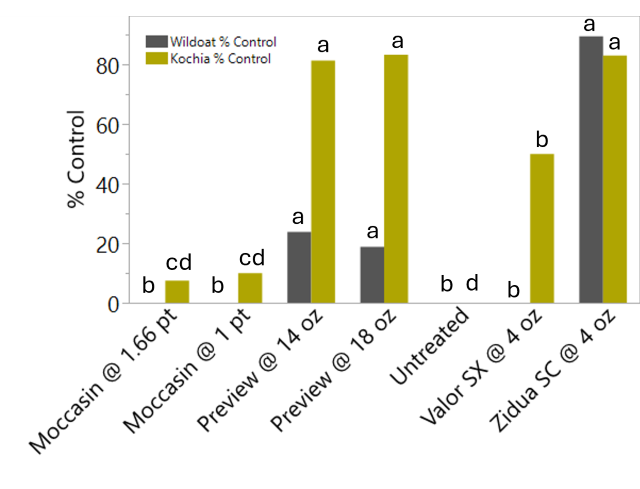
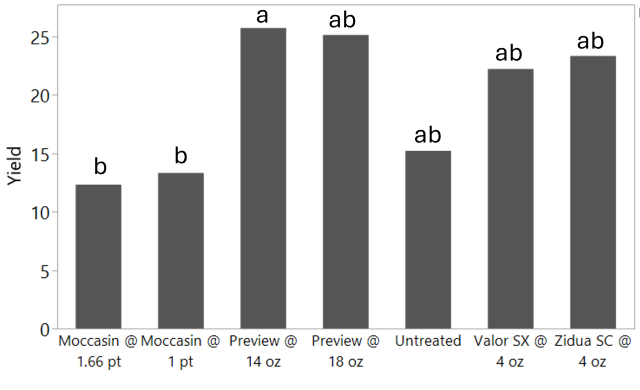
Only Zidua and Preview 2.1 provided control of wild oat, and they did not differ significantly from one another likely due to high levels of variability in the data.
Application of Moccasin did not improve control of kochia over the untreated check. Preview 2.1 and Zidua provided 80% control, while Valor provided 50% control. They did not determine if the kochia population where the trial was located was resistant to group 14 herbicides.
Application Timing & Soil Considerations
- Apply after September 30th when soil temperatures are ≤55°F at a 4-inch depth and declining. Optimal microbial activity and herbi-cide activation are achieved under these conditions. Do not apply to frozen soils.
- 10 gal/A water minimum
- Activation: Requires 0.5 - 1" of precipitation for incorporation.
- Low binding potential with surface residue.
- Do not apply to soils classified as sand (< 1% organic matter)
Use Rates and Crop Rotation Considerations
The standard use rate is 14 oz/ac.- Supports rotation to spring wheat, durum, barley, soybeans, and corn
- Equivalent to approximately 7.8 oz/ac of a 4lb Metribuzin and 3.8 oz/ac of Spartan
- Soil temps remain >55°F at application
- Soil pH is low (<6.0)
- Fields have elevated early-season weed pressure
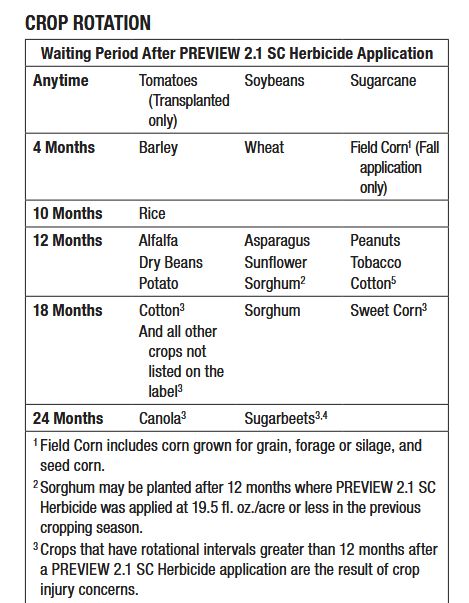
Summary
Preview 2.1 is a strategic fall-applied herbicide that delivers consistent residual control of key broadleaf species and early-season grass suppression. It supports resistance management objectives and provides clean fields ahead of spring planting, particularly in early- seeded systems where spring burndown windows are limited.If you have any questions reach out to your Horizon Resources agronomist.
Monte Kubas
UPL Territory Sales Manager
Kochia and Resistant Grass Management in Western ND
According to the Weed Science Society of America, the first step in managing resistant weed populations is using multiple herbicide modes of action with overlapping weed spectrums in rotation, sequences or mixtures. To combat the toughest weeds like Group 14 resistant kochia and/or Group 1 and Group 2 resistant green foxtail it will be necessary to incorporate different modes of action and active ingredients into your weed management plan.Anthem® Flex herbicide from FMC will be a valuable tool for this strategy. Powered by pyroxasulfone, which is a Group 15 herbicide, this introduces a mode of action to our herbicide rotations that has historically been underutilized in Western ND and Eastern MT. From research conducted by North Dakota State University over the past 4 years, we have found that a fall application of 3.5 – 4.5oz/A of Anthem® Flex provides increased residual control of problematic weeds such as kochia, green & yellow foxtail, downy brome, pigweeds and barnyardgrass well into the following growing season.
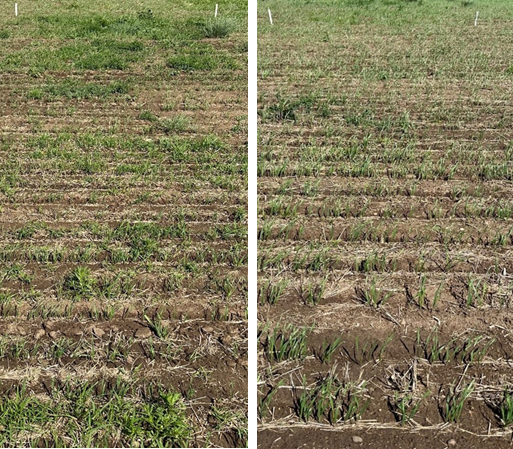
Photo on the left is the untreated check. Photo on the right had Anthem® Flex 4.0 oz/A applied October 2023. Photo taken June 11, 2024. NDSU NREC Minot, ND
Crops that may be planted next spring following a fall application of Anthem® Flex include lentils, peas, chickpeas, sunflowers, soybeans, corn and spring wheat. Application rates differ by crop and soil type so be sure to check the herbicide label for details.
For optimum results, apply Anthem®Flex when soil temperatures are lower than 55° F and declining to prevent herbicide degradation. At these lower temperatures, soil microbial activity is slow and herbicides will remain active into the spring when they are needed to control emerging weeds but also when early rains prevent timely spring applications. It is important to use at least 10 GPA when treating fields with heavy crop residue or weed populations for better coverage. Tank-mixing Anthem® Flex with other labeled products for the intended crop is encouraged to further broaden the spectrum of control and increase the number of effective modes of action at work.
Another option to add a long lasting, high residual Group 15 herbicide into your herbicide rotation is by using Authority® Supreme herbicide. Authority® Supreme combines the two longest lasting Group 14 (sulfentrazone) and Group 15 (pyroxasulfone) herbicide active ingredients to give you season long control of problem weeds such as kochia, Russian thistle, pigweeds, green foxtail, yellow foxtail and barnyardgrass among others.
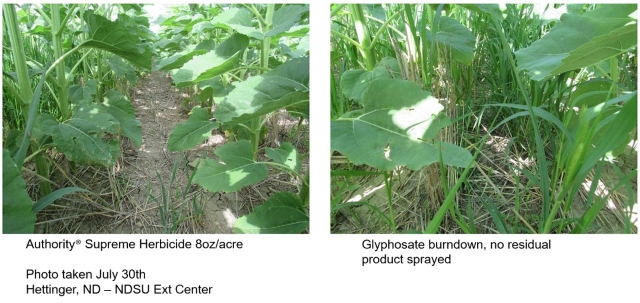
Crops labelled for use of Authority® Supreme include dry peas, chickpeas, soybeans, sunflowers. This can be used in either a fall or spring application. Due to the combination of these two actives and the complimentary abilities to each other, a spring application has been more common, but we do not have to limit ourselves to that use.
Use rates vary greatly with Authority® Supreme depending on the crop that is to be planted and the soil factors (pH, OM, & soil type). Take a look at the crop specific rate charts on the label to help guide your decision making, and contact your agronomist so that we can be sure to use the correct rate for your field and soil.
Ryan Hunt
FMC, Technical Service Manager for ND & SD
Climate Update
